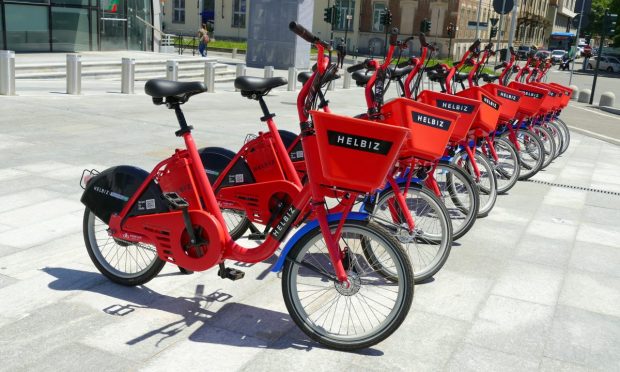Connected Micromobility Solutions Tackle ‘Last Mile’ of the Daily Commute

Sometimes traveling by car isn’t desirable, necessary or practical. For example, tourists may want to see the sights close-up, rather than through the windows of a moving car. Consumers may be less than a mile from a grocery store and see no reason to start up their car. Commuters may be dropped off by public transportation some distance away from their school or workplace.
These are some of the use cases for micromobility — the eScooters, eBikes and eMopeds often seen at the curbsides of cities and available for rent. These small, environmentally friendly transportation solutions make it easier to cover that first or last mile or to see the sights at one’s own pace.
“It’s being used of course by tourists, and more and more, as the service has become wider and more reliable, we’re seeing that it is becoming a part of people’s daily commute,” Helbiz Chief Operating Officer Jonathan Hannestad told PYMNTS.
Using Apps to Find and Pay for Micromobility
Helbiz is a provider of micromobility services with more than 50 licenses in cities around the world, primarily in Italy and the United States. Helbiz announced Jan. 18 an integration with Google Maps that will make its eScooters, eBikes and eMopeds appear on the map together with the approximate price.
After selecting a vehicle, users will be redirected to the Helbiz app to complete the rental process. As with other micromobility solutions, users scan a QR code on the vehicle to start the electric motor, and then when they’ve reached their destination, pay for the minutes used.
“With Google Maps, we’re not only reaching millions of new customers, but we’re able to directly help and change how they’re routed through their cities,” Hannestad said. “Since a lot of trips are determined to start from within Google Maps, this is a great way to help shift their way of traveling around the cities.”
Solving the Dependency on Cars
In cities with public transportation, micromobility serves people’s needs by transporting them to the bus or train station and then from the stop to their destination. Together, these modes of transportation provide a door-to-door solution. With apps helping people pay for the micromobility solution, the process is seamless.
Over the last four years, micromobility has become highly regulated, with cities awarding licenses to a few operators. Different cities have different needs, Hannestad said. Those with great public transportation want to help travelers cover that last mile, while cities with little public transportation want to provide a way to get around without a car.
“Solving the car dependency is a big, big thing for us,” Hannestad said. “Between 25% and 30% of all car trips in the U.S. and Europe are less than one mile, and shifting just a fraction of this will significantly improve congestion, air quality and life in all these cities — of course, making it easier to get from A to B.”
Since launching its service in 2018, Helbiz has seen that the users of micromobility are well distributed among most demographic groups. While the main audience is 25- to 35-year-olds, it’s also used by people in their 60s and 70s, and by students and professionals. Early tech adopters often lead the way, followed by others.
“The goal was always to become an integrated part of the local community,” Hannestad said. “So, not to replace the existing infrastructure, but to complement it, creating greener cities with less dependency on cars.”
